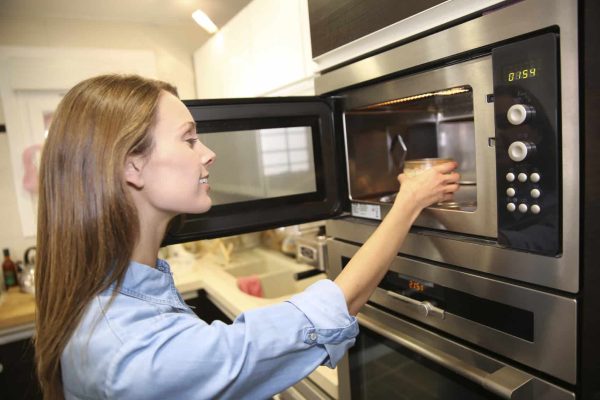The kitchen cleaver, an instrument renowned for its versatility and robustness, holds a special place in our everyday cooking. From dicing the freshest of vegetables to cutting through sturdy meat bones, a kitchen cleaver is an essential tool used by home cooks and professional chefs alike. However, maintaining the sharpness and longevity of a cleaver is often overlooked. A well-maintained cleaver not only enhances the precision of your cut but also ensures the taste and presentation of your dishes remain top-notch. An unsheathed cleaver may lose its sharpness over time and make the simple act of chopping cumbersome. Hence, regular upkeep of a kitchen cleaver is requisite to have an elongated life and continued efficiency for daily culinary demands.
Kitchen Cleaver Basics
Kitchen cleavers come in different sizes, and materials, and are designed to serve different specific functions. The most common types are the traditional cleaver, the Chinese cleaver, the Japanese cleaver, and the butcher’s cleaver. Their diversity relates to the shape of the blades, their weight, and their intended use. For example, a traditional cleaver’s strong, heavy blade is suited to split meat, while a Chinese cleaver, with a lighter and thinner blade, is ideal for chopping vegetables and slicing meat.
Understanding the material of the cleaver is important in ensuring its longevity. The most common materials are stainless steel, carbon steel, and high-carbon stainless steel. Stainless steel is durable and resistant to corrosion but may require frequent sharpening. Carbon steel is harder and remains sharp for an extended period but is more prone to rusting. High-carbon stainless steel offers a balance between the two by combining their strengths. Lastly, the structure of the cleaver being sharp is not a luxury but an essential safety measure. A sharp cleaver is not only efficient but reduces the risk of injuries as it does not require force to cut, thereby avoiding slips or mishandling.
Post-Use Care For Your Cleaver
The longevity of your cleaver greatly depends on how you care for it post-use. Cleaning your cleaver properly is a fundamental step. Do not leave it soaking in water after cooking – ensure to wash it immediately to avoid residue build-up. Use warm soapy water and a soft sponge to clean the blade gently. Harsh scrubbing can lead to scratches and damage to the blade surface, affecting its performance.
Storage plays another critical role in preserving your cleaver’s longevity. Never stack your cleaver in a drawer with other kitchen utensils; this can cause nicks on the blade, dulling it quickly. Instead, keep it on a magnetic strip or in a knife block. Avoiding dishwashers for cleaning cleavers is recommended as the heat and forceful water can damage the blade. Likewise, harsh cleaning chemicals can deteriorate the material of your cleaver. Aside from cleaning and storage, make sure to keep the knife dry after use, as moisture facilitates rust, which can cause irreparable damage to the cleaver.
Strategies for Maintaining Sharpness
At the heart of a well-functioning kitchen cleaver lies its sharpening strategy. To keep a sharp edge, regular honing is recommended, preferably before or after each use. Honing isn’t sharpening per se, but it helps realign the microscopic teeth on the edge of the blade that gets bent with regular use, restoring the original sharpness. A honing steel or honing rod is an effective tool for this task.
Using proper cutting techniques and surfaces also has a significant impact on maintaining your cleaver’s sharpness. For instance, avoiding frozen foods and bones can help make your blade last longer. Similarly, cutting on softwood boards like maple or walnut instead of glass or metal surfaces helps preserve the knife edge. The frequency of sharpening a kitchen cleaver depends on its use; however, a general rule is when it can’t cut through a tomato with ease, it probably needs sharpening. Lastly, although manual sharpening methods can be effective with practice, professional sharpening tools provide precision and are considered safe for beginners.
Repair and Replacement
Identifying signs of wear and knowing when to repair a kitchen cleaver is important for safety. Visible damages like chips on the blade or significant bluntness despite sharpening are indicators that your cleaver needs repair. A loose or broken handle might also call for immediate repair, as it not only affects the balance of the cleaver but can also pose safety risks. When wielded carefully, a good cleaver can last for years, but improper use or chronic neglect can shorten its lifespan. Just like all kitchen tools, cleavers are not immune to aging. When regular sharpening does not restore your cleaver’s performance, and repair attempts prove futile, it’s time to consider a replacement. It’s worth noting that professional sharpening and repair services are better suited for difficult upkeep tasks and could extend your cleaver’s lifespan. But if replacement becomes inevitable, understanding your needs and selecting the right type and material is essential. It’s always advisable to invest in a quality product, as maintaining a good cleaver is less expensive and safer than regularly buying and replacing lower-quality ones.
In the culinary world, a kitchen cleaver is more than just a tool; it’s an extension of the cook’s hand. The regular care of your cleaver not only ensures your food preparation remains efficient but also extends the life of the cleaver, making it a long-term investment more than a mere kitchen utensil. Careful cleaning, proper storage, regular sharpening, timely repair, or replacement of a worn-out cleaver – all of these contribute to not only a smoother cooking experience but also a safer one. Therefore, it’s safe to say that taking proper care of your cleaver certainly yields better, safer, and more efficient cooking.




